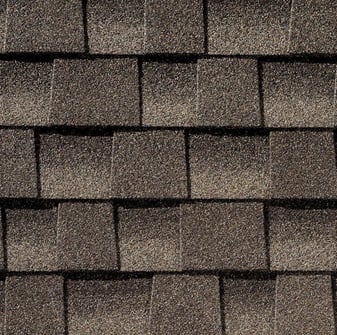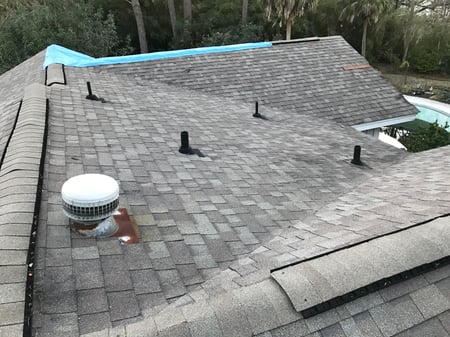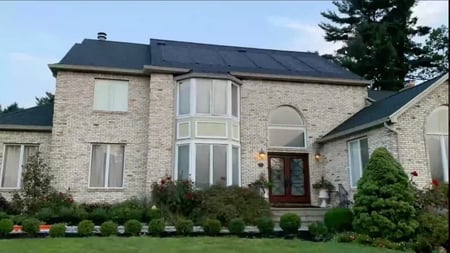
The role a roof plays in our homes extends far beyond mere shelter; it plays a critical role in regulating indoor temperatures and overall energy efficiency. One of the significant challenges homeowners face, particularly in regions with scorching summers (I’m looking at you, Florida), is the propensity of roofs to absorb and retain excessive heat. Ice bath, anyone?
As the sun's relentless rays beat down on our rooftops, the absorbed heat can infiltrate our living spaces, causing discomfort and driving up cooling costs. At RoofCrafters, we know this all too well. We’ve worked with clients spanning from Georgia to South Carolina, as well as Florida, and we’ve seen exactly the wrath that Ms. Summer can have on a roof.
Therefore, understanding the dynamics of roof heat absorption and implementing effective strategies to mitigate it is crucial for creating a more comfortable, energy-efficient, and sustainable living environment. Ugh, if only there were an article that could spell it out for me. Well, dear reader, you’re in luck! In just a few short moments, you’ll learn some telltale signs that your roof may be absorbing too much heat, and some steps you can take to mitigate this challenge. Let’s get started!
Is My Roof Absorbing Too Much Heat?

Determining whether your roof is absorbing too much heat depends on various factors, including your location, the type of roofing material you have, and your comfort level inside your home. Here are 6 signs to help you assess if your roof might be absorbing excessive heat
1. Energy Bills: One indicator could be higher energy bills, especially during hot summer months. If your air conditioning system is running constantly to maintain a comfortable indoor temperature, it might be because your roof is absorbing too much heat.
2. Roof Material: Different roofing materials have varying levels of heat absorption. Dark-colored and asphalt shingles tend to absorb more heat than lighter-colored or reflective roofing materials, like metal, clay tiles, or cool roofing systems.

3. Roof Insulation: Proper roof insulation can help regulate the transfer of heat from your roof to your home's interior. Insufficient insulation can result in a hotter indoor environment.
4. Indoor Temperature: If you consistently find your home uncomfortably hot during warm weather, even with air conditioning, it could be a sign that your roof is contributing to heat buildup.
5. Roof Ventilation: Adequate roof and attic ventilation can help dissipate excess heat. If your roof lacks proper ventilation, it may retain more heat, making your home hotter.

6. Local Climate: Consider your geographical location and local climate. In areas with intense heat and prolonged summers, it's common for roofs to absorb more heat. However, your home's design and features can help mitigate this.
Ultimately, whether your roof is absorbing too much heat is a subjective judgment based on your comfort and energy efficiency goals. If you're concerned about it, taking steps to improve insulation, ventilation, or roofing materials can help create a more comfortable and energy-efficient living space.
How Do I Mitigate My Roof From Absorbing Too Much Heat?
Mitigating your roof from absorbing too much heat involves implementing various strategies to reduce heat transfer from the roof to the interior of your home. Here are several effective ways to accomplish this:
Choose Cool Roofing Materials
Opt for roofing materials that have high solar reflectance (the ability to reflect sunlight) and high thermal emittance (the ability to radiate absorbed heat). Examples include metal roofing, clay tiles, concrete tiles, and cool roofing membranes.
Use Lighter Roof Colors

Light-colored roofing materials, such as white or light gray, naturally absorb less heat than dark-colored ones. Consider a light-colored roof to reflect more sunlight.
Apply Reflective Roof Coatings
Reflective roof coatings can be applied to existing roofs to increase their reflectivity. These coatings are designed to reflect sunlight and reduce heat absorption. They can be particularly useful for asphalt shingle roofs.
Improve Roof Insulation
Adequate roof insulation helps regulate temperature by preventing heat from entering your home in hot weather and escaping in cold weather. Consider adding or upgrading insulation in your attic space.
Install a Radiant Barrier
Radiant barriers are reflective materials that can be installed in the attic, just beneath the roof deck. They reflect radiant heat away from the roof, helping to keep the attic and your home cooler.
Ensure Proper Roof Ventilation
Proper roof ventilation can help dissipate excess heat from your attic space. Ridge vents, soffit vents, and attic fans can promote air circulation and reduce heat buildup.
Plant Shade Trees
Planting trees strategically around your home can provide natural shade, reducing the amount of direct sunlight your roof receives. This can significantly lower the heat absorbed by your roof.
Use Cool Roofing Shingles

If you prefer asphalt shingles, you can choose cool roofing shingles that have reflective properties to reduce heat absorption. Look for products labeled with ENERGY STAR or Cool Roof Rating Council (CRRC) ratings.
Schedule Regular Roof Maintenance
Keep your roof in good condition by conducting regular inspections and maintenance. Damaged or deteriorating roofing materials may absorb more heat, so timely repairs can help maintain your roof's efficiency.
Consult a Professional
If you're unsure about the best strategies for your specific roof and climate, consider consulting with a roofing professional or energy specialist. They can provide tailored recommendations based on your needs. Mitigating your roof from absorbing too much heat can lead to a more comfortable indoor environment, lower energy bills, and increased energy efficiency. The specific measures you choose will depend on factors like your roof type, budget, and climate, so it's important to assess your situation and make informed decisions.
Is Your Home’s Climate Making You Hot-Headed?
As a Florida resident, I myself understand heat; trust me. managing and mitigating roof heat absorption is a vital consideration for maintaining a comfortable and energy-efficient living space. Excessive heat absorption by your roof can lead to increased cooling costs, discomfort, and potential damage to roofing materials.
By implementing strategies such as choosing cool roofing materials, applying reflective coatings, improving insulation, ensuring proper ventilation, and planting shade trees, you can significantly reduce the heat transferred from your roof to your home's interior. Ultimately, the approach you take to mitigate roof heat absorption should be tailored to your specific circumstances, including your geographical location, roofing material, and budget.
Consulting with roofing professionals or energy experts can help you make informed decisions and create a more sustainable and comfortable environment inside your home. If you’re interested in learning more about the options available for mitigating your roof from absorbing too much heat, be sure to hit the “Schedule an Inspection” button down below, and one of our roofing experts will provide you with a detailed analysis of your roof’s health, and ways to improve your energy efficiency!
My name is Cassie, and I’m the Content Manager here at RoofCrafters. I was born and raised in Chicago, Illinois, and made my way out to Florida post-college graduation. I’m incredibly passionate about writing and creating valuable content that helps others with the collaboration of my marketing team. When I’m not working, I enjoy shopping (a little too much), spending time at the beach, and reading!



